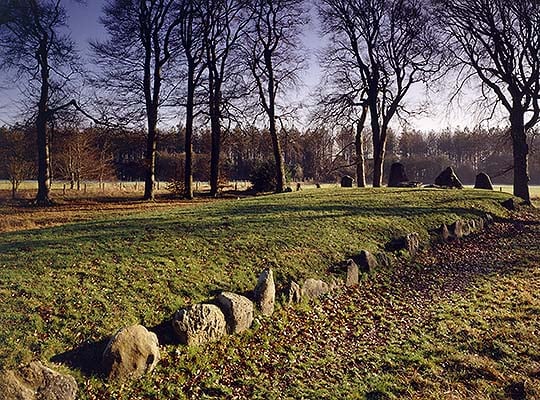Description of Wayland’s Smithy
It is the ruins of the second, larger barrow at Wayland’s Smithy, which dates from about 3460–3400 BC, that visitors see today.

Mound
The trapezoidal mound at Wayland’s Smithy, just under 55 metres long, is made of chalk and earth. The perimeter of the mound is defined by a continuous kerb of sarsen stones. The long sides of the mound were originally flanked by steep-side ditches, from which most the mound material came.
Burial Chamber
Within the southern end of the mound is the burial chamber itself. The chamber consists of a narrow and partially constricted passage, leading to a pair of small side chambers aligned east–west. By the time the chambers were examined in 1920 they had been ransacked, but they still contained the jumbled remains of several people.
Entrance
At the entrance to the chamber a drystone wall forms a façade, and against this are set four large sarsen stones; there were originally six, three on either side of the entrance. The four remaining stones were found lying in front of the monument and restored in 1962.
READ MORE ABOUT WAYLAND’S SMITHY
Note
The text on this page is derived from interpretation panels at the site. We intend to update and enhance the content as soon as possible to provide more information on the property and its history.
